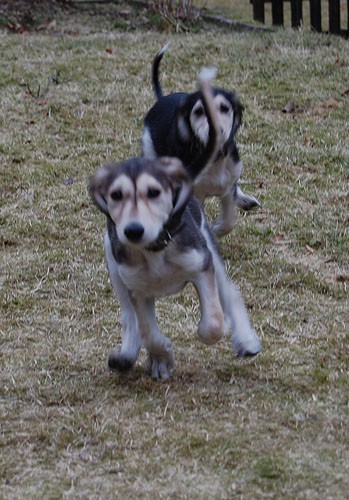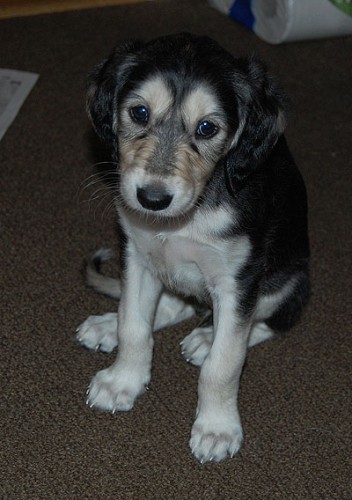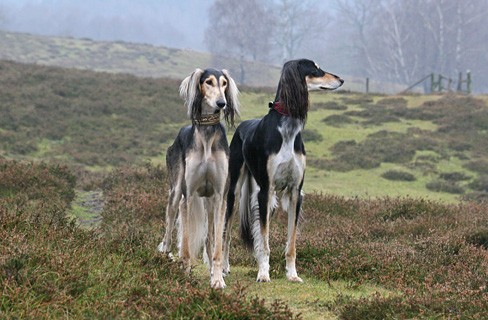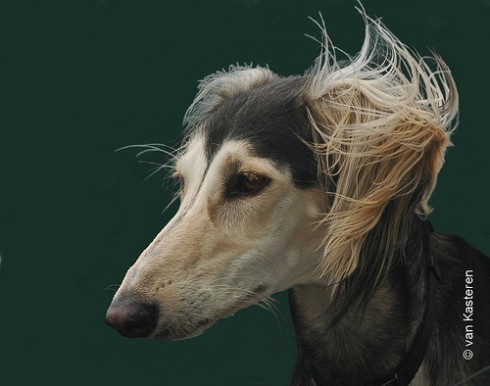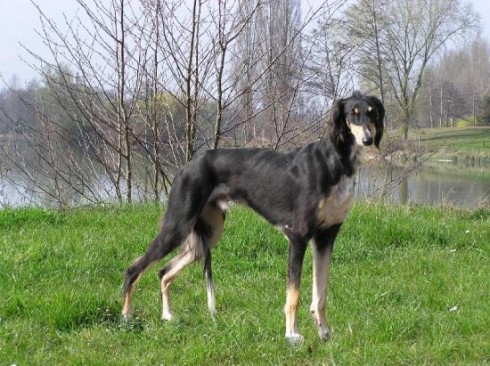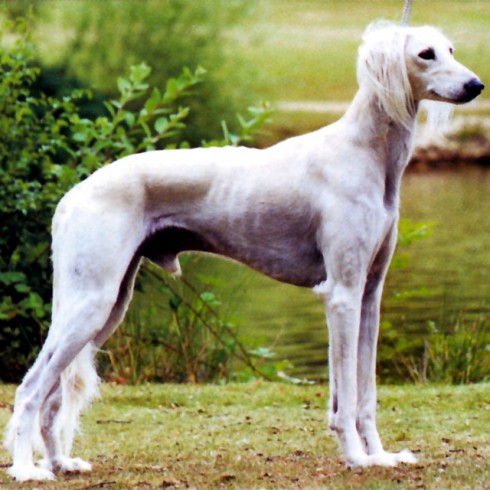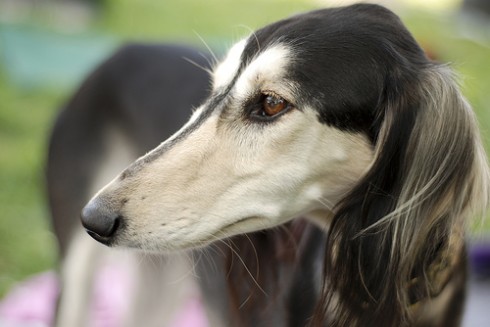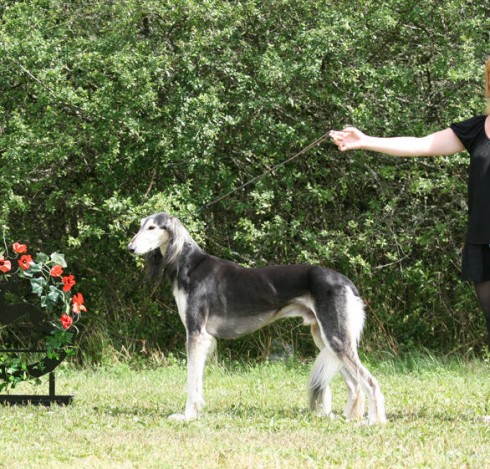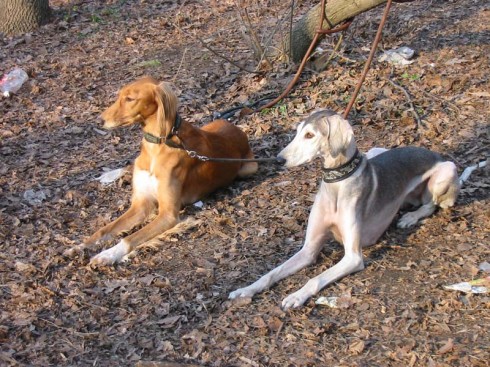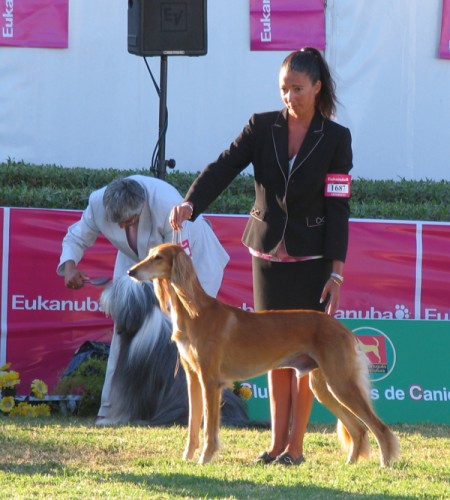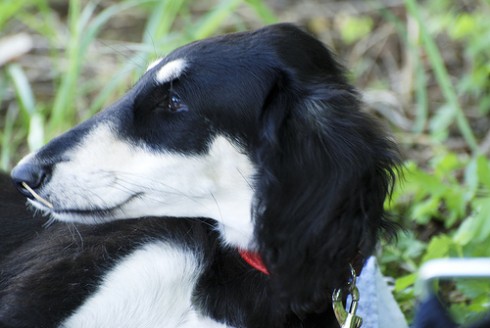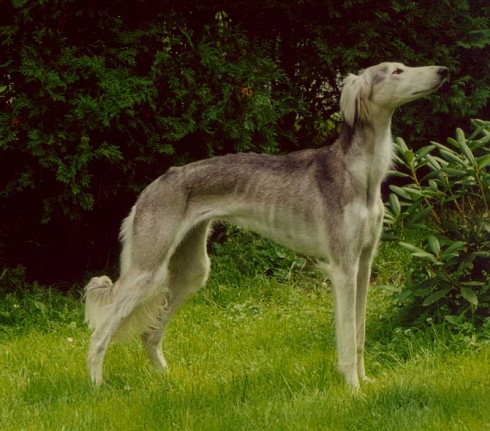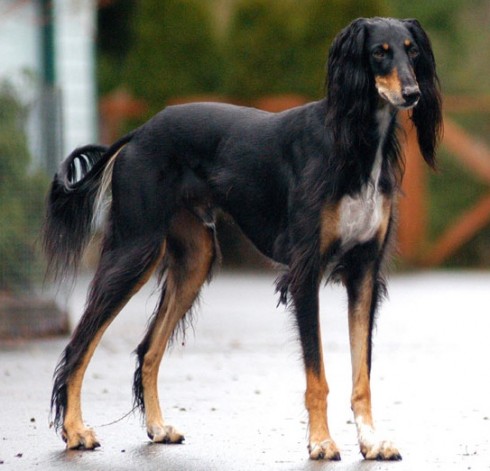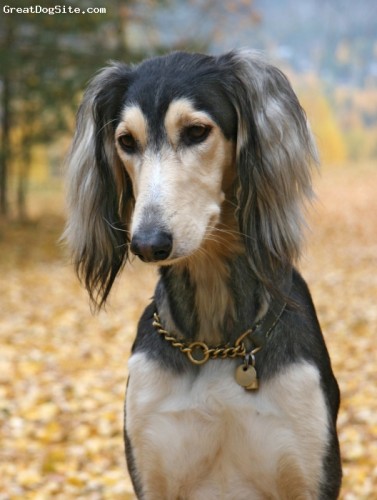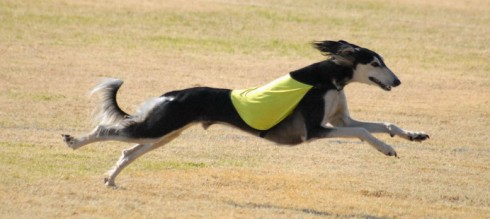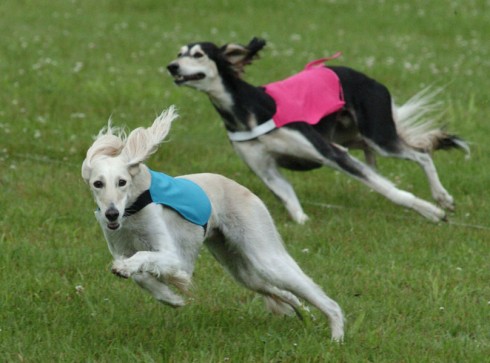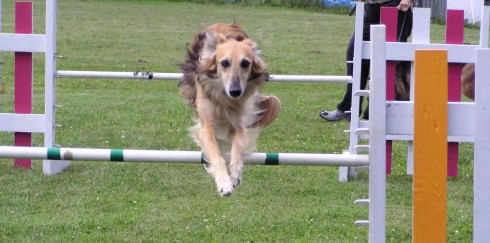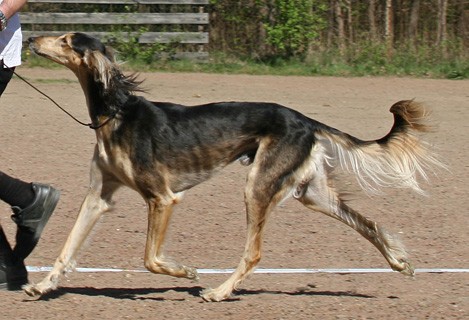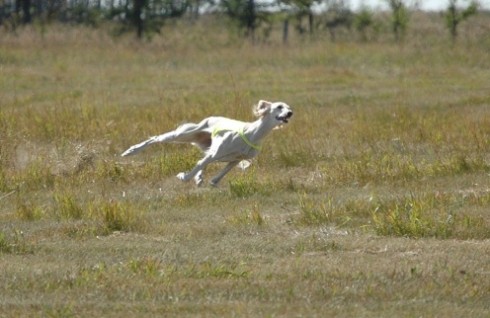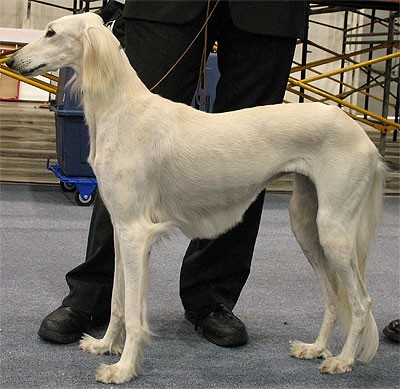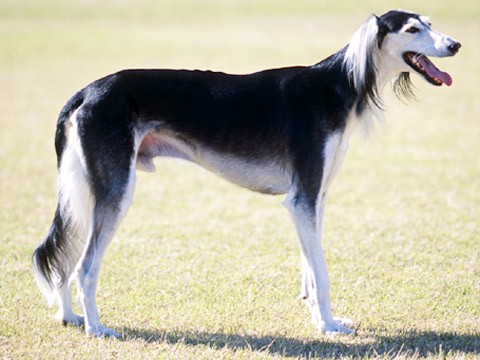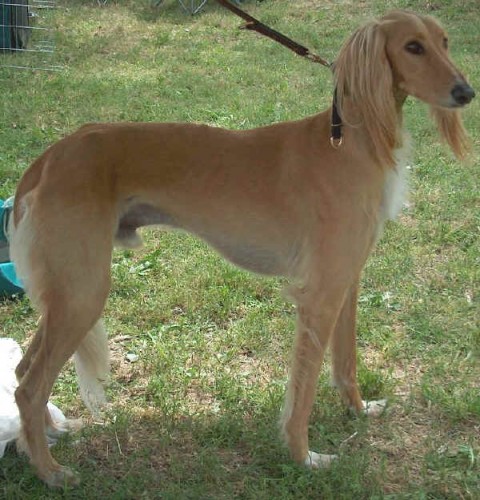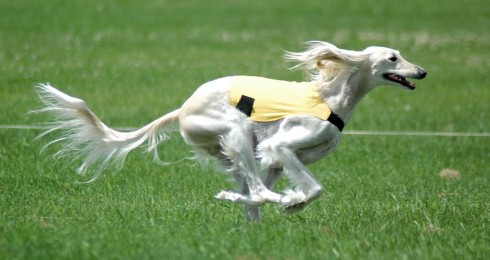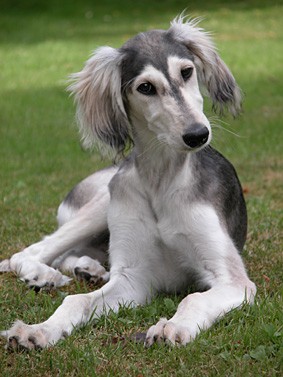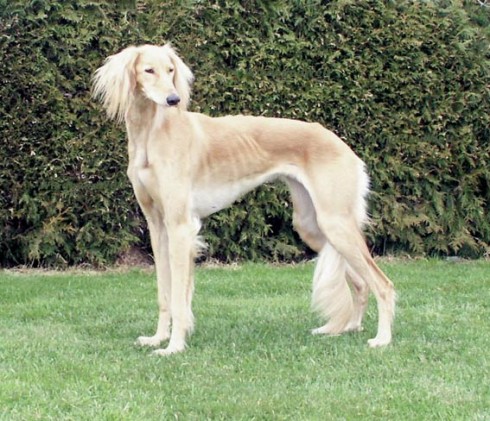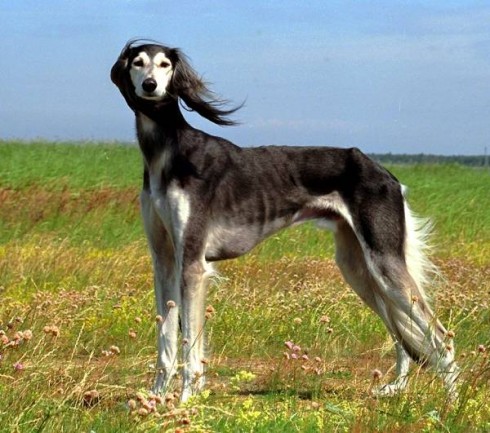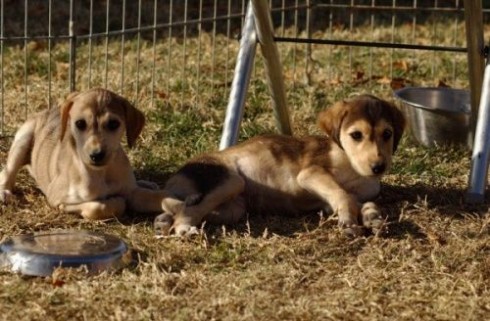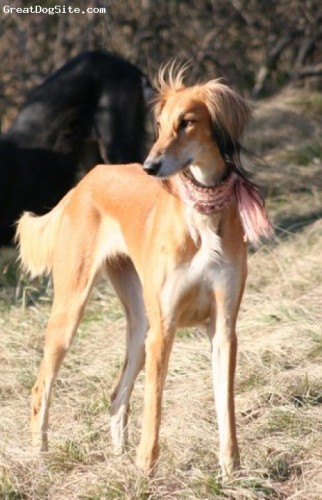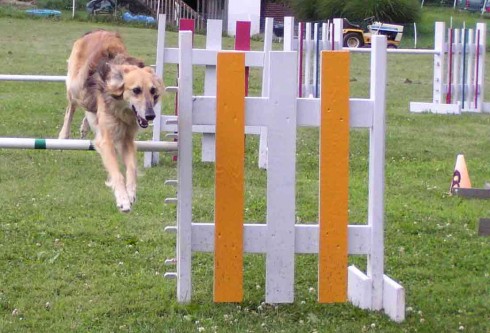Main Index
In Store
Our Web Store
Miniature Schnauzer Picture Gallery
Latest Dog Blogs
- What Are The Basic Commands To Train A Dog?
- PaySafe As The Most Popular Type Of Deposit
- Everything You Need To Know About Pet Sales
- Dogs Contribute To Our Physical And Mental Well Being
- How To Choose Where To Bet On Greyhounds In 2022
- Volunteer With Animals - How To Help Dogs Around The World
- Basic Understanding Of The House Edge
- Why You Should Get A Dog
- Top 20 Popular Dog Names Around The World
- Constipation in Dogs and How to Find Solutions
Saluki
The graceful and beautiful Saluki is usually quiet indoors, but is active outdoors and needs serious exercise. This dog is fast. Because of his independent nature, training him takes patience and humor. He is devoted to his owner and does not usually warm up to strangers.
Did you know?
The Saluki, royal dog of Egypt, is perhaps the oldest known breed of domesticated dog, identified by some historians as "a distinct breed and type as long ago as 329 B.C. when Alexander the Great invaded India."
Salukis were widespread and appeared in Egypt were they were held in such great esteem that its body was often mummified like the bodies of the Pharaohs themselves.
So you want to own a Saluki?
The Saluki is an active breed who likes the outdoors. The Saluki should never be left off a leash or let to roam outside of a fenced yard.
The Saluki shows great attachment for his owner; he is an affectionate dog who thrives in families where he is the focus of attention.
Indicative Breed Standard
General Appearance
Gives impression of grace, symmetry and of great speed and endurance, coupled with strength and activity.
Characteristics
Great variation in type due to wide geographical area of origin. There are both feathered and smooth varieties. The expression should be dignified and gentle with faithful far-seeing eyes. Light flowing movement.
Temperament
Reserved with strangers but not nervous or aggressive. Dignified, intelligent and independent.
Head and Skull
Head long and narrow, skull moderately wide between ears, not domed, stop not pronounced, whole showing great quality. Nose black or liver.
Eyes
Dark to hazel, bright, large and oval, not prominent.
Ears
Long and mobile, not too low set, covered with long silky hair, hanging close to skull. Bottom tip of leather reaches to corner of mouth when brought forward. Provided ear is covered with silky hair which may grow only from top half, the standard is complied with but longer hair also correct.
Mouth
Teeth and jaws strong with a perfect, regular and complete scissor, i.e. upper teeth closely overlapping lower teeth and set square to the jaws.
Neck
Long, supple and well muscled.
Forequarters
Shoulders sloping and set well back, well muscled without being coarse. Chest deep and moderately narrow, when viewed from front not an inverted V. Forelegs straight and long from elbow to wrist. Pasterns strong and slightly sloping. Not round boned. Humerus sloping slightly backwards.
Body
Back fairly broad, muscles slightly arched over loin, but never roached backed. Brisket long and deep, not barrel-ribbed or slab-sided, with good cut up. Sufficient length of loin important.
Hindquarters
Strong hip bones set wide apart. Stifle moderately bent with well developed first and second thigh. Hocks low to ground.
Feet
Strong, supple, of moderate length, toes long and well arched, not splayed out, but at the same time not cat footed. Feathered between the toes (except the smooth variety). Front feet may point outwards at a very slight angle when standing.
Tail
Set on low from long and gently sloping pelvis. Carried naturally in curve. Well feathered on underside but not bushy. In adults not carried above line of back except in play. Tip reaching to hock.
Gait/Movement
Smooth, flowing and effortless. Light and lifting, showing both reach and drive without hackney action or pounding.
Coat
Smooth and of soft silky texture, feathering on legs and back of thighs, puppies may have slight woolly feathering on thighs and shoulders. Feathering may occur on throat. In the smooth variety the coat is the same but without feathering.
Colour
Any colour or combination of colours permissible, other than brindle.
Size
dogs: 58-71 cms (23-28 ins) at shoulders; bitches: proportionately smaller.
About Our Article Directory
- Article
- 27 November 2010
- 2 comments
Canis lupus familiaris
- Breed Article
- 29 May 2010
- No comments
Quick Search
Donate
Latest Dog Pods
- Tips on How to Stop Your Dog from Biting
- Beware - Not All Advertised Dog Rescues Really Are! How Can You Know The Truth?
- Helpful Tips For Dog Obedience Problems
- How to Keep Dogs From Eating Poop
- Dog Grooming Tips - A General Overview of the Very Basics of Dog Grooming
- Recognising Different Types of Dog Obedience Problems
- 5 Important Tips On Feeding A Puppy


